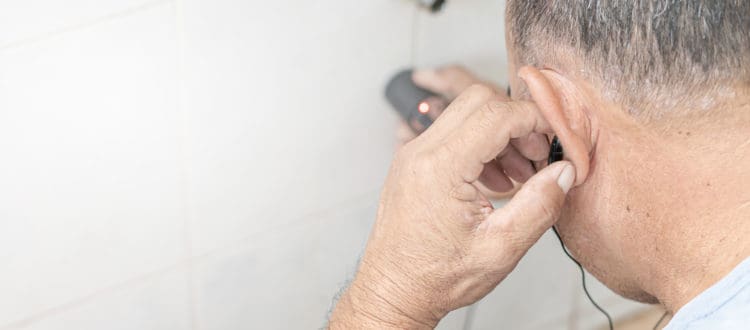Types of Leak Detection Equipment
In the past, the only way a plumber could know if a leak existed was through obvious property damage, finding pooling water or by cutting into walls, floors or ceilings. Today, leak detection services do not damage your home or commercial building’s structure in the quest to find a leak. Nor does a leak detection specialist need to dig all over your property to find the source of a water leak. Instead, modern leak detection equipment finds problems through use of advanced technology.
Below, we look at some of the leak detection equipment available for specially-trained technicians to use in and around your home or business.
Spot Detector for Water Leak Detection
Hydroscopic Tape-Based Sensor
The hydroscopic tape-based sensor (HTB) involves placement of an electronic sensing tape around pipes or water containers. If the tape detects moisture, such as in the case of a leak, it sends the leak detection service a signal. This is not the most precise method of detecting leaks in water systems, however. Condensation on the piping or container can cause the leak detection equipment to produce false alarms.
Continuous Run Sensor
The continuous run sensor includes cables with advanced sensors that are run along water systems, such as piping. When this leak detection equipment senses a leak, it sends data to the leak detection service signaling the problem and providing specific information. That data can include the leak’s location, its size and other details.
Tracer Gas Leak Detection
Tracer gas leak detection involves use of a tracer gas released into a pipe system to find leaks. Helium or a nitrogen and hydrogen mix are the most common leak detection gases. These gases are pumped into the piping. Which then quickly flows through the system and searches for cracks or holes through which it can escape. After releasing the gas into the system, the technician uses “sniffer” leak detection equipment to find the escaping gas, and thus, the leaks.
Intelligent Cable Sensor
An intelligent cable sensor is a cable routed through a plumbing or pipe system. This leak detection equipment senses environmental differences within that system to find leaks. At the same time, the routed cable’s length and the distance traveled indicates to the leak detection service where the problem exists.
Infrared Thermography
Infrared thermography uses an infrared imaging camera and radiated energy readings to show leak detection specialists where leaks exist even before they cause other obvious signs. This equipment works very well indoors and outside, finding problems in pipe systems located within walls, floors and deep underground. Using this leak detection equipment requires specialized training. But with proper use your specialist can pinpoint leaks within mere inches. Additionally, professional leak detection companies can accomplish this without damaging your walls or other parts of your building’s structure.
Leak Detection Service You Can Count On
Leak Locators of Myrtle Beach has provided residential and commercial leak detection service since 2006. We use state-of-the-art leak detection equipment and highly trained specialists to find problems quickly and save you money. For service in your area, find the Leak Locators office nearest you or call us at (843)655-5375.

